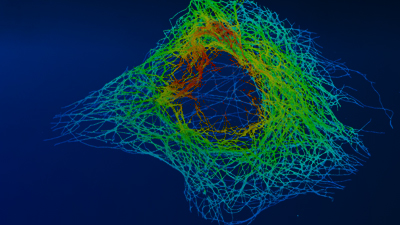

Dye Selection and Labeling Strategies for Super-Resolution Microscopy
Obtaining quality SMLM data requires careful sample and imaging buffer preparation as well as optimization of imaging conditions.
This webinar focuses on the basic requirements and practical considerations necessary to obtain high-quality single-molecule localization microscopy data while imaging fixed cells. You can find additional SMLM protocols and procedures here.
Understand How to Select Ideal Fluorophores and Labeling Approaches for SMLM
Single-molecule localization microscopy (SMLM) is an optical super-resolution technique that circumvents the diffraction limit of light by localizing the center point of each fluorophore’s recorded point spread function. SMLM requires the use of labeling strategies and specialized fluorophores and/or buffer conditions that enable most of the fluorophores in the sample to be “turned off” during the experiment so that a sparse subset of the fluorophores in the sample can be isolated from their nearest “on” neighbors and localized to build up an image of interest. Due to the nature of super-resolution single-molecule imaging, careful sample preparation, imaging buffer preparation, and optimized imaging conditions are fundamental requirements for obtaining quality data.
In this webinar, we cover the basic requirements for fixed cell imaging that a researcher will need to obtain high-quality single-molecule localization microscopy data.
- We will begin by discussing the basic principles of SMLM and how they relate to the selection of organic fluorophores;
- From there, different labeling strategies will be considered, along with approaches to optimize fixation conditions based on structural targets; and
- Lastly, we will discuss how different buffer compositions can impact dye performance during SMLM.
At the conclusion of the webinar attendees should leave with a better understanding of the factors that need to be considered when preparing samples and acquiring data for SMLM.
Find out more about the technology featured in this webinar or our other fluorescence microscopy solutions:
Featured Products and Technology
Speaker(s)
Dr. Lauren Gagnon
Vutara Applications Scientist, Bruker
Dr. Lauren Gagnon graduated from Emmanuel College with a degree in Chemistry before completing her PhD in Chemistry at the University of Washington. Her thesis research focused on the development of novel approaches to single molecule localization microscopy using DNA barcoded antibodies.

